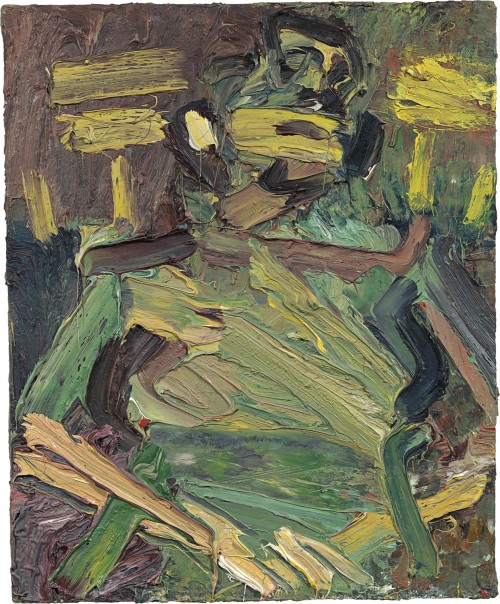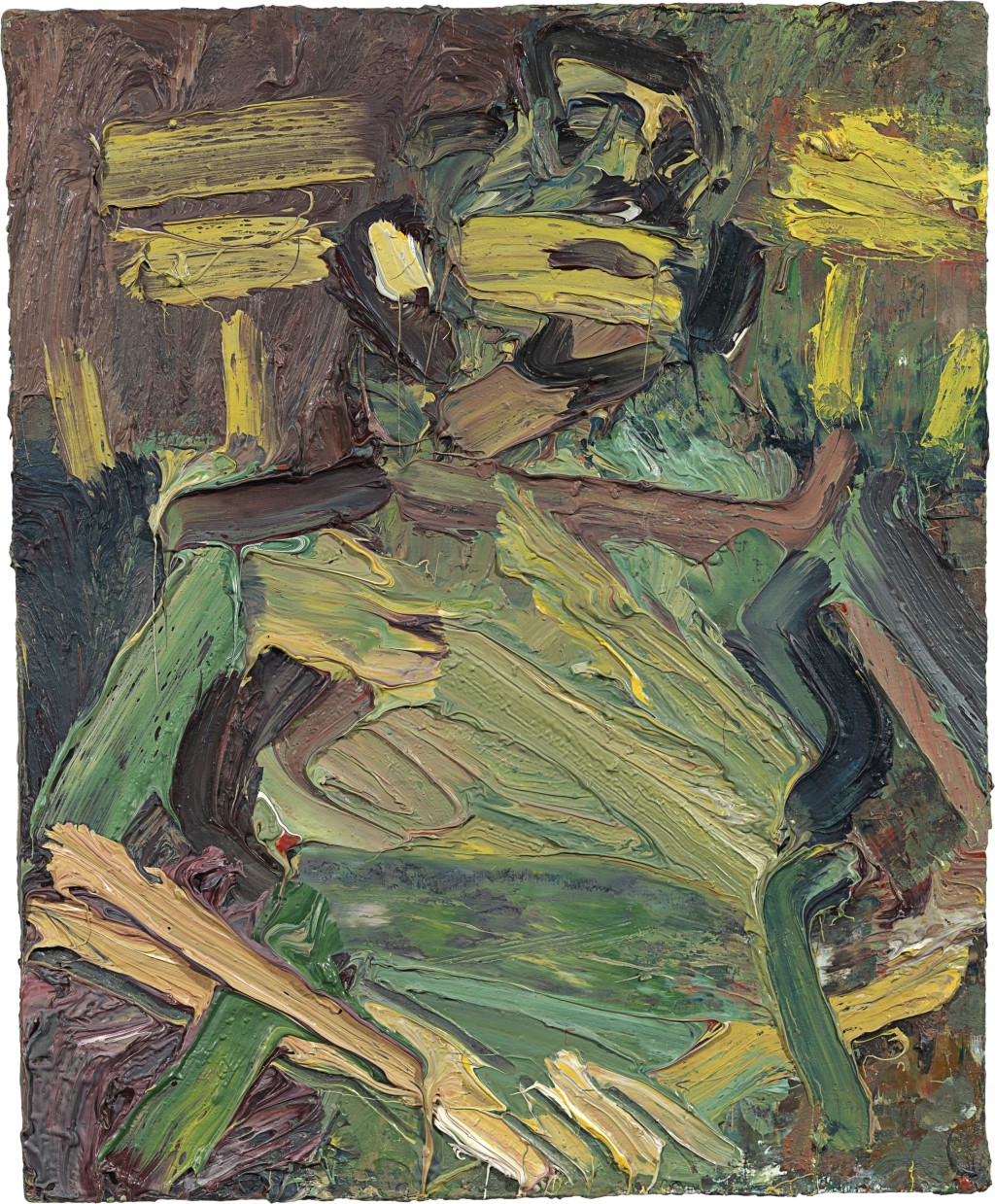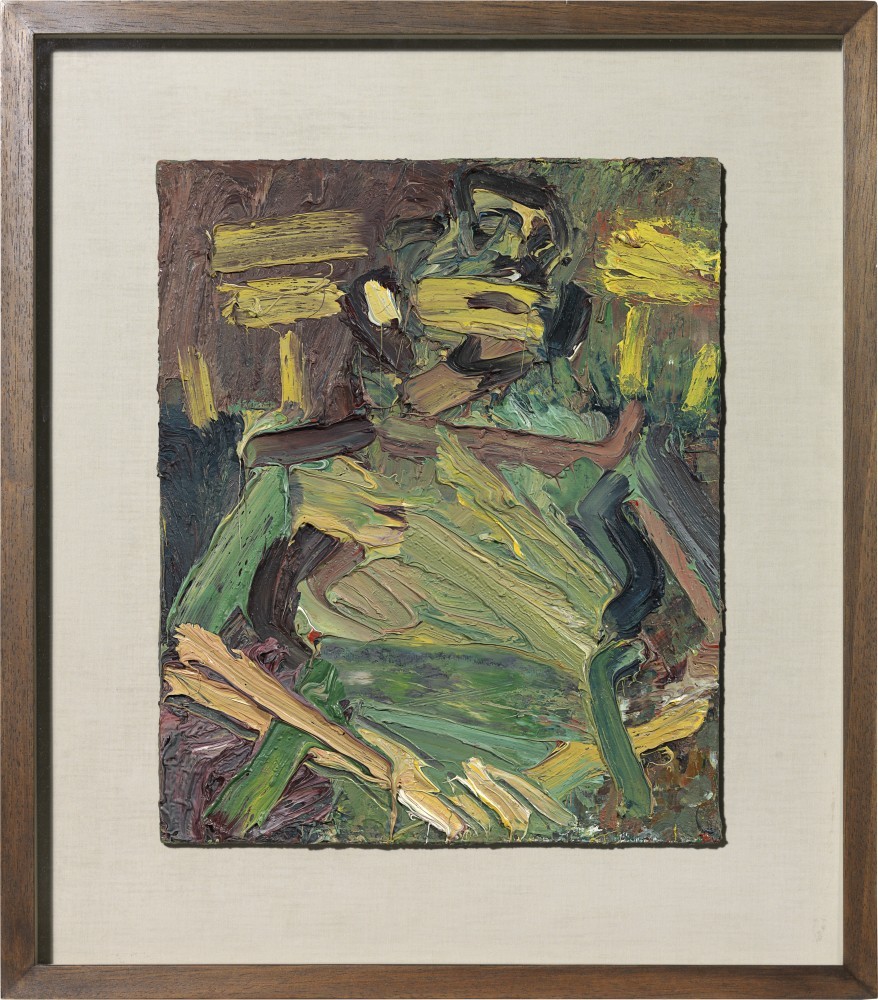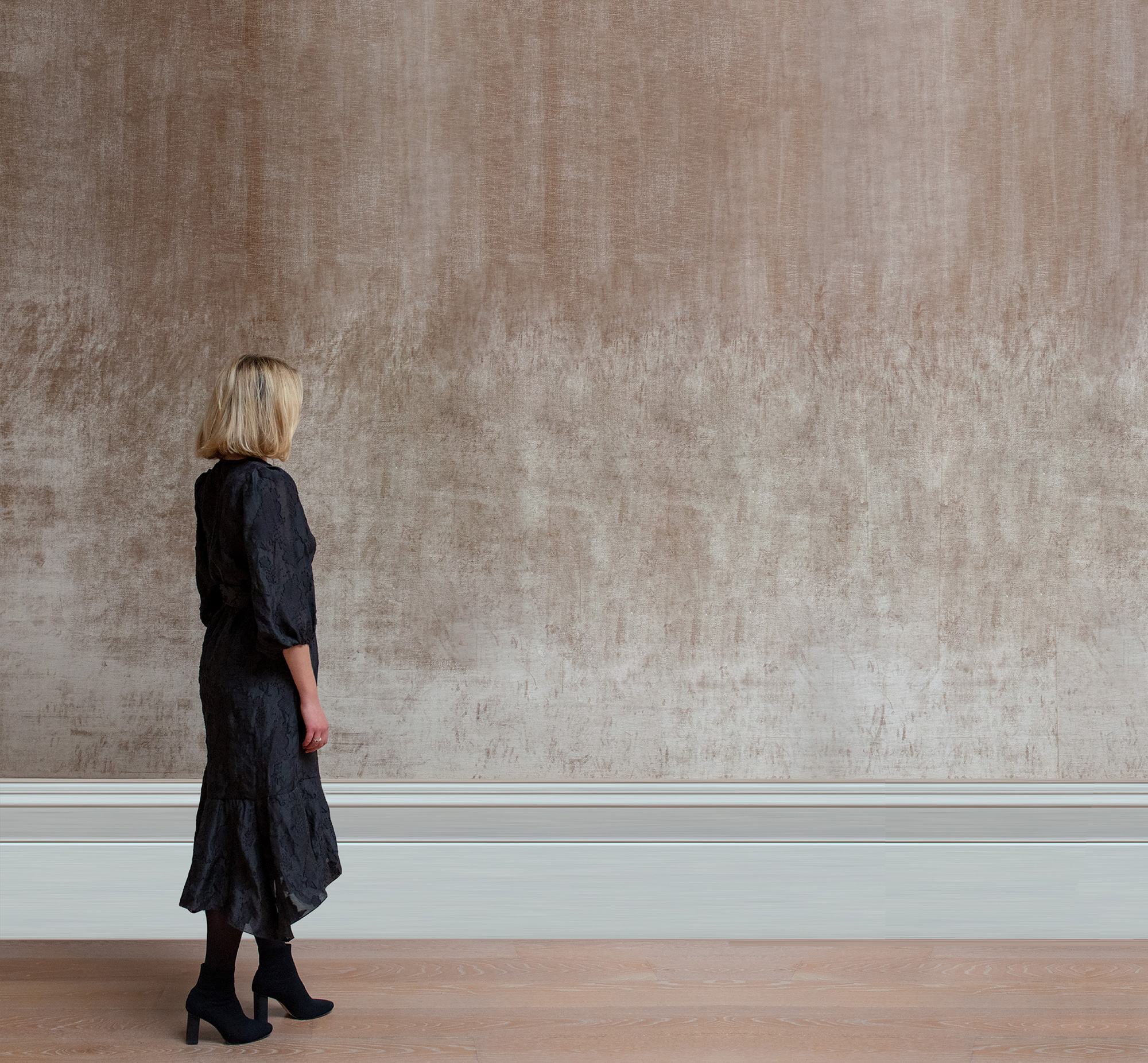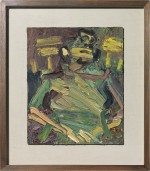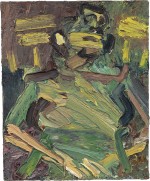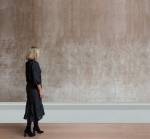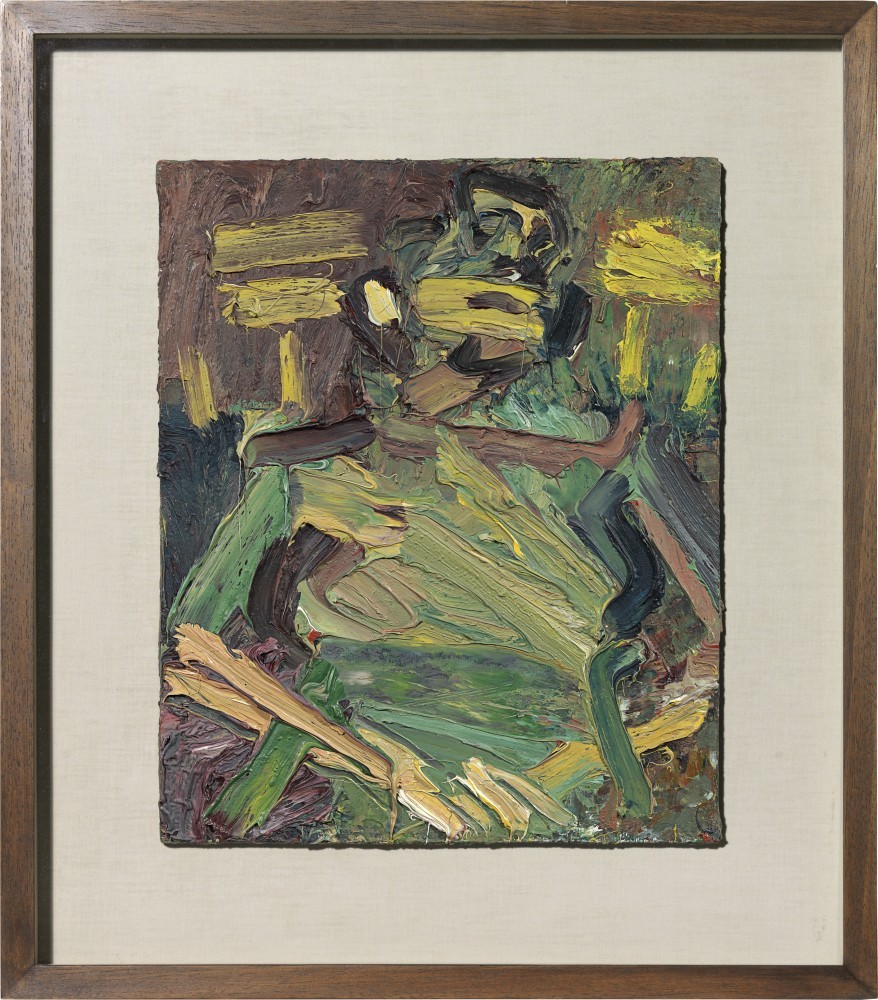FRANK AUERBACH
Berlin 1931 - 2024 London
Ref: CD 115
Portrait of J.Y.M. seated
Oil on board: 16 x 13 in / 40.6 x 33 cm
Frame size: 23 x 20 in / 58.4 x 50.8 cm
With original backboard
Floated in a box-style frame
Painted in 1976
Provenance:
Marlborough Fine Art, London [No.34020.9]
Monica Bain, Los Angeles, California
Bonhams London, 18th November 2009, lot 55;
Richard Green, London;
Private collection, Europe, acquired from the above December 2010
Exhibited:
London, Arts Council of Great Britain, Hayward Gallery, Frank Auerbach, 4th May-2nd July 1978, cat. no.130; this exhibition travelled to Edinburgh, Fruit Market Gallery, 15th July-12th August 1978
London, Richard Green, Modern Masters, May 2010, no.33, illus. in colour
Literature:
Robert Hughes, Frank Auerbach, Thames and Hudson, London 1990, pp.204, 205, 237, illus. no.209, p.205
William Feaver, Frank Auerbach, Rizzoli, New York 2009, p.278, no.369, illus. in colour
William Feaver, Frank Auerbach, Rizzoli, New York 2022, p.320, no.369, illus. in colour
‘JYM has been sitting for me twice a week for almost thirty years, first as a “life model” then, with the passing of time, as a friend; latterly mainly for portraits. JYM is an acronym of her name, she is known as JYM to her friends.’[1] Juliet Yardley Mills was a professional model whom Auerbach met in 1956 while she was working at the Sidcup School of Art. She went on to sit for the artist every Wednesday and Sunday until 1997. The sitter recalled: ‘We had a wonderful relationship because I thought the world of him and he was very fond of me. There was no sort of romance but we were close. Real friends.’[2]
In this striking frontal, three-quarter length portrait, JYM faces the viewer head-on. The energy of her seated form, seen in a posture of repose against the yellow high-backed chair, is barely contained by the canvas. Her tilted head, bent arms and clasped hands reach to the outer edges of the image, her left elbow slightly cropped. Thick black and brown brushstrokes articulate the external boundaries of the figure in particular the chest, shoulders and face, as well as her features seemingly in single strokes, as if to contain her vitality. Auerbach skilfully defines the human frame, with even broader green and yellow strokes of thick impasto forming rich peaks of paint.
In his seminal monograph on Frank Auerbach, Robert Hughes suggests that the artist’s sensuous, dynamic Portrait of JYM was inspired by Rembrandt, drawing a direct link between Old and Modern masters: ‘Just as, in drawing, Auerbach’s branching line contains overt semi-conscious references to those sudden hooks of the ink-ladden nib which were one of the most often imitated aspects of Rembrandt’s drawing style, so in painting the embedded bars of pigment left by the broad square brush are deeply influenced by Rembrandt’s habit of modelling in explicit facets, each a daub of pigment squarely turned towards the eye. The structure of Rembrandts like Portrait of Hendrickje Stoffels, which Auerbach often drew in the National Gallery, finds its way into his own half-length portraits; the long leaning rectangles of her robe, building and driving into a diagonal movement that runs from lower right to upper left of the trapezoidal block of her figure, are metabolized into the long strokes that summarize the arms and torsos of such paintings as Portrait of JYM Seated, 1976.’[3]
The tilted head, slightly to one side, resting against the back of a chair was a recurrent pose, one the artist explored on a larger scale in the late seventies and early eighties in works such as JYM seated I (Tate Gallery). However Hughes suggests this had more to do with the sitter than the artist: ‘There was one angle on J.Y.M.s head, tilted back and slightly to one side, resting against the chair-back, that he repeatedly painted in the 70s and 80s – not because it was a ‘formal problem’ that he needed to resolve, but because he had no choice about it; it was one of the ways in which J.Y.M. repeatedly sat.’[4]
Other portraits of JYM by Auerbach feature in the public collections of Aberdeen Art Gallery, Sheffield Museums, the British Council Collection and Tate, London, as well as Museo Thyssen-Bornemisza, Madrid, Portland Art Museum, Oregon, Museo Tamayo Arte Contemporaneo, Mexico City and Art Gallery of New South Wales, Sydney.
Head of JYM, 1973 JYM Seated, 1976 Head of JYM, 1978
Oil on board: 41 x 36 cm Oil on board: 50.8 x 45.8 cm Oil on canvas: 61 x 66 cm
Sheffield Museums Aberdeen Art Gallery Museo Nacional Thyssen-
Bornemisza, Madrid
Head of JYM III, 1980 JYM I, 1981 JYM Seated No.I, 1981
Oil on board: 71.1 x 61 cm Oil on board: 73.2 x 68.2 cm Oil on board: 71.1 x 61 cm
British Council Collection Southampton City Art Gallery Tate
[1] The artist in a letter to the Whitworth Art Gallery, 28th February 1986.
[2] Juliet Yardley Mills cited in, Frank Auerbach: paintings and drawings 1954-2001, exh. cat., Royal Academy, London, 2001, pp.26-7.
[3] Robert Hughes, Frank Auerbach, Thames & Hudson, London 1990, p.204.
[4] Ibid., p.204.

